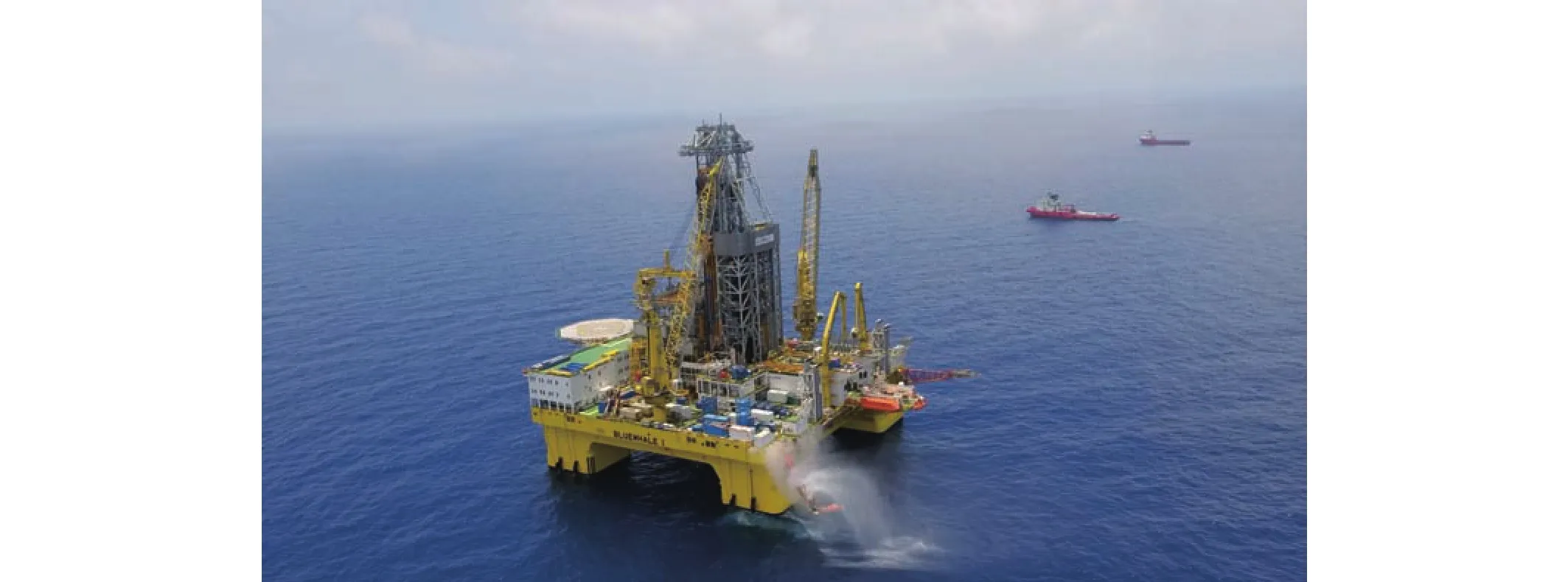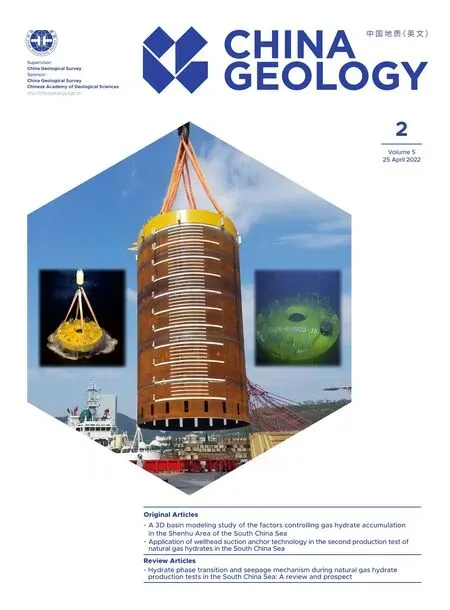Exploring natural gas hydrates toward a carbon-neutral world
Zi-guo Hao (Editor-in-Chief)
Development and Research Center of China Geological Survey, Ministry of Natural Resources, Beijing 100037, China
The energy revolution is the foundation and driving force for the progress of human civilization.The discovery and utilization of fossil energy, which has greatly increased labor productivity and transformed society from a civilization based on farming into an industrial civilization, is a global energy revolution.Over the past two centuries, industrial civilization has brought about substantial progress but has also caused increasingly severe environmental and climate problems.Given these issues, governments around the world have successively formulated specific indices and deadlines for peak carbon dioxide emissions and carbon neutrality.
Presently, driven by great progress in the development and utilization of modern clean energy resources and the wide application of the carbon removal and utilization technologies, such as carbon capture, utilization, and storage(CCUS), human beings are moving from industrial civilization into ecological civilization, which will involve a new round of profound energy revolution.
From the geological perspective, exploring, developing,and utilizing new clean energy sources are undoubtedly major developmental directions.As a type of unconventional natural gas resource, natural gas hydrates (NGHs) enjoy large amounts of available resources and are clean and eco-friendly.Therefore, the industrialization of NGHs has great strategic significance for China’s energy mix optimization, green development, and the achievement of peak carbon dioxide emissions and carbon neutrality.
The China Geological Survey (CGS) started its investigation and research into offshore NGHs resources at the end of the last century and has obtained a series of fruitful results after more than 20 years of efforts.In 1999, the CGS discovered bottom simulating reflectors (BSRs)—geophysical evidence of NGHs—in the South China Sea (SCS) for the first time (Fig.1a).In 2004, it found out approximately 430 km2of authigenic carbonate rocks in the northern SCS.In 2007, the CGS carried out NGHs drilling in the Shenhu area in the SCS for the first time, obtaining physical samples(Zhang HT et al., 2007).In 2013 and 2016, it discovered two NGHs reservoirs with natural gas resources of more than 100 billion m3each in the eastern offshore area of the Pearl River Mouth Basin and the Shenhu area in the SCS (Fig.1b).

Fig.1.a-“Fendou NO.5”, the Marine scientific survey vessel that discovered the BSRs in 1999; b-Professor Guang-xue Zhang, chief scientist of the Guangzhou Marine Geological Survey, China Geological Survey, ignites massive natural gas hydrates in 2013.
The NGHs industrialization consists of five general stages, namely, the theoretical research and simulation experiment, the exploratory production test, the experimental production test, the productive production test, and the commercial production stages.In the past decade, the CGS has carried out surveys and production tests of NGHs resources by areas and levels on the principles of exploration first, verification through production tests, gradually advancing, and achieving leaps of the stages.Consequently, it has attained two major leaps from the theoretical research and simulation experiment stage to the exploratory production test stage, and then to the experimental production test stage.The first leap was marked by the exploratory production test in 2017, during which the technology of NGHs exploitation in vertical wells was developed with great effort.This exploratory production test is the first successful production test from clayey silt reservoirs—the most widely distributed NGHs reservoirs in the world.It lasted for 60 days continuously and stably, yielding cumulative gas production of 30.9×104m3(Li JF et al., 2018; Fig.2).The second major leap was evidenced by the experimental production test in 2020, during which the core technologies were achieved for NGHs exploitation in horizontal wells applicable to shallow and soft strata in deep seas.These technologies play a decisive role in increasing the scale of gas production towards NGHs industrialization.Specifically, 32 key technologies in six categories and 12 core devices were developed, including a suction pile with major innovations used to stabilize wellheads (see the cover photo).Moreover, a system was established for environmental protection and monitoring, i.e.,the “four-in-one” environmental monitoring system for the atmosphere, water bodies, seabed, and bottomhole.This experimental production test achieved 30 days of continuous gas production and set a new world record for cumulative gas production of 86.14×104m3(Ye JL et al., 2020; Fig.3).

Fig.2.The first NGHs production test in the South China Sea: The production test platform “BLUEWHALE #1”.

Fig.3.Blue Whale II-conducting the second NGHs production test in the South China Sea.
However, NGHs suffer from poor quality and a low degree of accumulation.Moreover, their reservoir characteristics are totally different from those of conventional oil and gas reservoirs.As a result, the NGHs exploration and development are still facing challenges in science, technology,and engineering.Overall, great efforts are still required to achieve NGHs industrialization.To fully present the latest progress made in NGHs exploration and development in China, this special issue covers 14 papers on NGHs accumulation and reservoir characteristics in the SCS, the microscopic mechanisms of NGHs formation and dissociation, and NGHs exploitation and monitoring technologies.The purpose is to create an active academic atmosphere, promote NGHs exploration and development,and accelerate NGHs industrialization.
Hydrate phase transition and seepage mechanism are crucial leading-edge scientific topics for NGHs exploitation in the SCS.Given this, Xu-wen Qin et al., standing deputy commander of the On-site Headquarters for the second NGHs production test in the SCS in 2020, was specially invited to give a review of the latest research results of NGHs exploitation mechanisms in the SCS (Hydratephase transitionandseepagemechanismduringnaturalgas hydratesproductiontestsintheSouthChinaSea:Areview andprospect).This review is incorporated into the special commentary column of this special issue, and it covers the pore structure characterization of porous media in clayey silts,molecular dynamics simulation, hydrate phase equilibrium,the relationship between phase transition and reservoir permeability, secondary hydrate formation, methane adsorption, change in pore permeability, two-phase relative permeability, the optimization of reservoir seepage capacity,depressurization strategy, and production capacity regulation.
The hydrate migration and accumulation system and reservoir characteristics are the core components of NGHs exploration.They are also major factors in screening the optimal targets for NGHs exploitation.The four papers in the column of this special issue for NGHs accumulation and reservoir characteristics focus on the NGHs accumulation mechanism and reservoir characteristics in the Shenhu Area and the Qiongdongnan Basin in the northern SCS.Two of these papers, by Zhi-yuan Xie et al.and Yu-lin He et al.,describe the hydrate accumulation mechanism and its controlling factors and reveal the NGHs migration and accumulation system in the Shenhu Area and the Qiongdongnan Basin, based on basin simulation and the comprehensive interpretation of geological-geophysical data,respectively (A3Dbasinmodelingstudyofthefactors controllinggashydrateaccumulationintheShenhuareaof theSouthChinaSea;Migrationandaccumulation characteristicsofnaturalgashydratesintheupliftsandtheir slopezonesintheQiongdongnanBasin,China).The other two papers, by Shu-yu Wu et al.and Lin Lin et al., discuss the characteristics of NGHs reservoirs in the Shenhu Area from the perspectives of frequency-divided inversion and velocityporosity relationships, respectively (Applicationoffrequency divisioninversioninthepredictionofheterogeneousnatural gashydratesreservoirsintheShenhuArea,SouthChinaSea;Velocity-porosityrelationshipsinhydrate-bearingsediments measuredfrompressurecores,ShenhuArea,SouthChina Sea).
The microscopic mechanisms of NGHs formation and dissociation are the basis for gaining an in-depth understanding of gas-water-sediment interactions and microscopic seepage in the processes of NGHs accumulation and exploitation.The four papers in the column for microscopic mechanisms of NGHs formation and dissociation mainly present experimental and numerical simulation results regarding NGHs formation and dissociation.These papers include a review by Yong-chao Zhang et al.of the formation mechanism, experimental method, and property characterization of NGHs in marine sediments (Formation mechanism,experimentalmethod,andpropertycharacterizationofgrain-displacingmethanehydratesin marinesediment:Areview), and a review by Zheng-cai Zhang et al.of the progress in molecular simulation studies of NGHs nucleation and growth (Molecularsimulationstudies onnaturalgashydratesnucleationandgrowth:Areview).Moreover, the work by Yun-kai Ji et al.expatiates the results from an experimental study on the characteristics of pore water conversion during methane hydrate formation in unsaturated sediments (Experimentalstudyoncharacteristics ofporewaterconversionduringmethanehydratesformation inunsaturatedsand).The paper by Jing Li et al.explores functionally active aerobic methanotrophs and their methane oxidation potential in sediments in the Shenhu Area, SCS through experiments and cultivation (Identificationof functionallyactiveaerobicmethanotrophsandtheirmethane oxidationpotentialinsedimentsfromtheShenhuArea,South ChinaSea).
Good tools are essential to do the job well.Technologies for safety guarantee and monitoring are a prerequisite for safe and effective NGHs exploitation.Thirty-two key technologies in six categories and 12 core devices were developed during NGHs production tests in the SCS in 2017 and 2020.The five papers in the column of this special issue for NGHs exploitation and monitoring technologies highlight the stability of the strata and casing structure, flow safety, and monitoring technology during NGHs exploitation in the SCS.In this column, the paper by Bo Li et al.describes the application of wellhead suction anchor technology in the second NGHs production test in the SCS (Applicationof wellheadsuctionanchortechnologyinthesecondproductiontestofnaturalgashydratesintheSouthChinaSea); the paper by Peng-fei Xie and Lin Yang et al.introduces the analytical results of the stability of seabed strata and casing structure during NGHs exploitation by depressurization in horizontal wells (Stabilityanalysisofseabedstrataandcasingstructure duringthenaturalgashydratesexploitationby depressurizationinhorizontalwellsinSouthChinaSea); and the paper by Li Huang and Jia-le Kang et al.provides the experimental simulation of hydrate formation in waterdominated pipelines during NGHs exploration and reports its influential factors (Experimentalinvestigationofhydrate formationinwater-dominatedpipelineanditsinfluential factors).Moreover, the work by Xiang-ge He and Xue-min Wu et al.introduces distributed optical fiber acoustic sensors forin-situmonitoring of marine NGHs production(Distributedopticalfiberacousticsensorforinsitu monitoringofmarinenaturalgashydratesproductionforthe firsttimeintheShenhuArea,China).All these technologies were applied in the second NGHs production test in 2020.The results of their application indicated that the NGHs production test was safe and under control, with no methane leakage or geological disaster occurring.
These papers cover both the latest results from NGHs exploration and production tests in the SCS and the latest progress in laboratory experimental and numerical simulation studies.Moreover, they integrate both the prospects for basic theoretical research into NGHs and reports on new technologies and devices for NGHs exploitation and monitoring.Therefore, they involve all aspects of NGHs exploration and production tests in offshore areas, reflecting high levels of innovativeness and advanced exploration.It is hoped that this special issue will create an active academic atmosphere regarding NGHs research in China, promote NGHs research by integrating engineering as driving force with scientific issue addressment, and provide scientific bases for the third NGHs production test in the SCS and for promoting NGHs industrialization.
The editorial board and editorial office ofChinaGeologywould like to extend their sincere appreciation to guest editors Xu-wen Qin, Neng-you Wu, and Gang-yi Zhai for their academic guidance.Thanks also go to Ping-kang Wang who come from China Geological Survey and Zhen Yang who come from Guangzhou Marine Geological Survey, China Geological Survey for the vigorous assistance and active cooperation they provided during the solicitation of contributions to this special issue.
- China Geology的其它文章
- Hydrate phase transition and seepage mechanism during natural gas hydrates production tests in the South China Sea: A review and prospect
- A 3D basin modeling study of the factors controlling gas hydrate accumulation in the Shenhu Area of the South China Sea
- Migration and accumulation characteristics of natural gas hydrates in the uplifts and their slope zones in the Qiongdongnan Basin, China
- Application of frequency division inversion in the prediction of heterogeneous natural gas hydrates reservoirs in the Shenhu Area, South China Sea
- Velocity-porosity relationships in hydrate-bearing sediments measured from pressure cores, Shenhu Area, South China Sea
- Experimental study on characteristics of pore water conversion during methane hydrates formation in unsaturated sand

